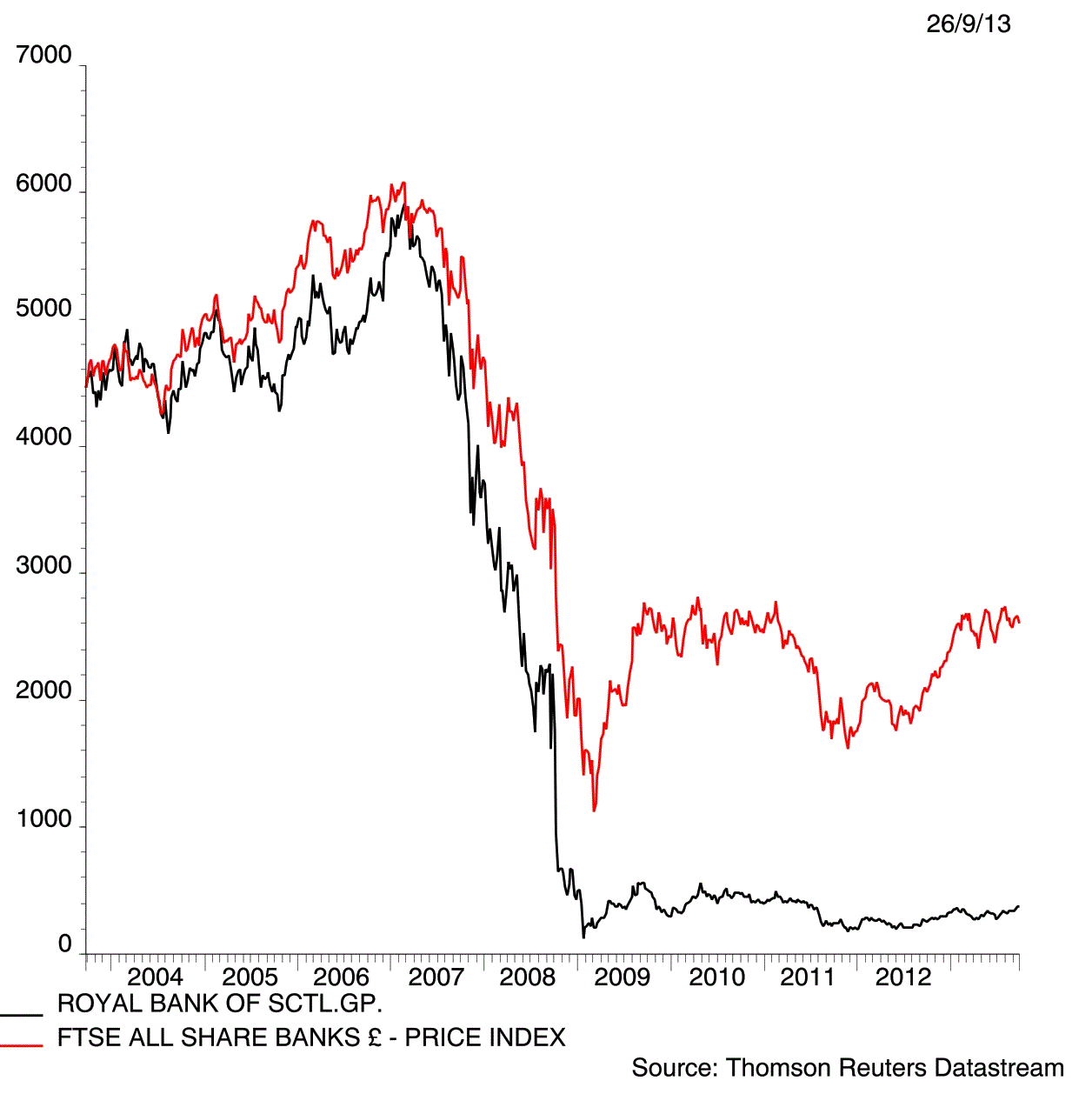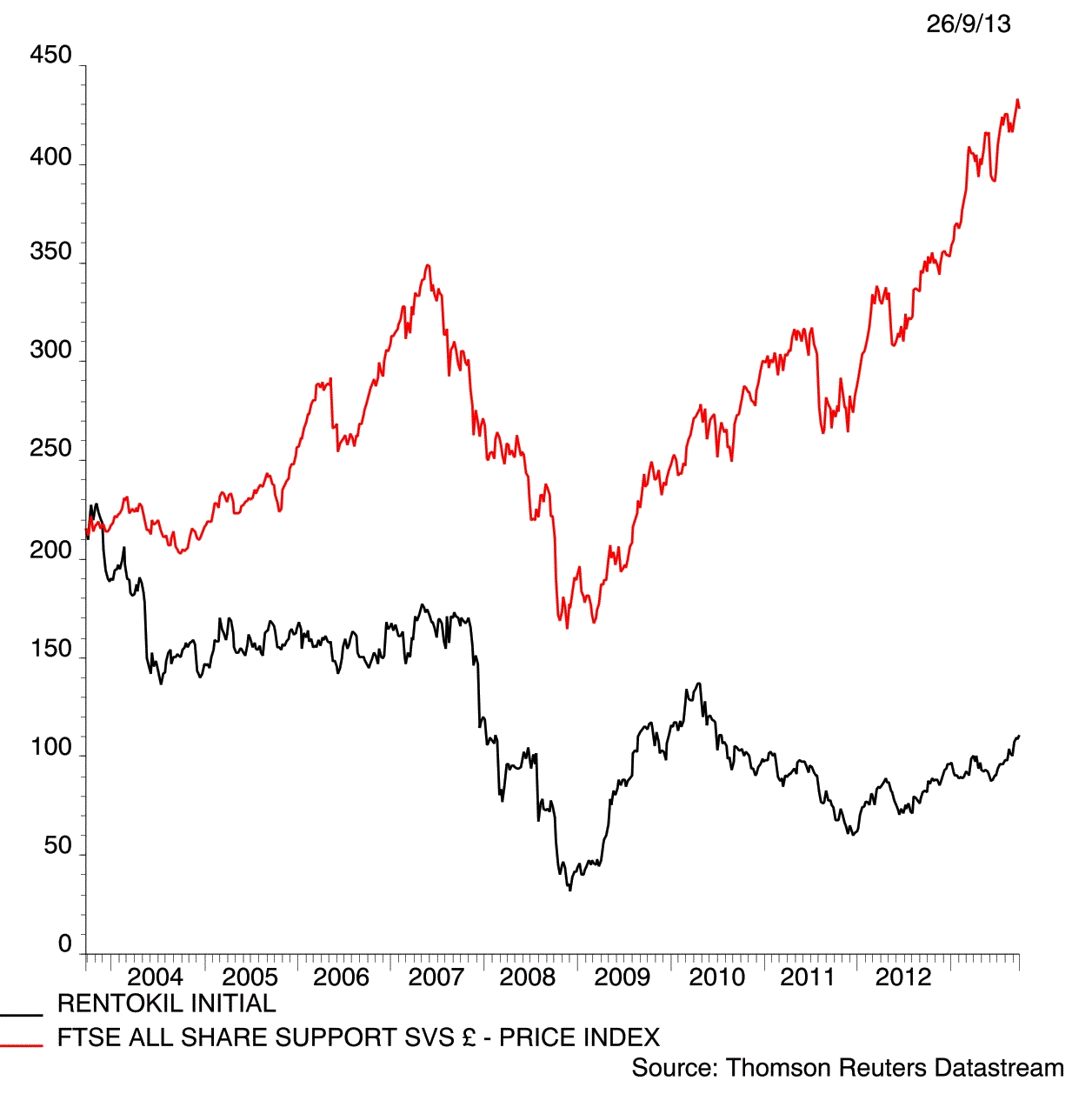
Simple mathematics tells us it takes a gain of 100% to make up for a 50%. If you want to run a successful investment portfolio, it is therefore just as important to avoid the losers as it is to identify the winners. In the fourth part of our Ultimate Investment Guide we introduce our Ten Red Flags checklist which aims to pick up on examples of bad practice as well as key metrics which can raise question marks about a firm?s future fortunes.
They may not be absolutely definitive - there are exceptions to every rule - but all of the red flags should raise alarm bells individually. If one or more are present in any prospective investment, they would warrant serious investigation.
(Click on image to enlarge)
Failures at the top
A December 2011 report from the Financial Standards Authority (FSA) (now replaced by the Financial Conduct Authority) on the collapse of Royal Bank of Scotland (RBS) highlighted the dangers of a dominant chief executive officer (CEO). It clearly indicated how the interests of the now-disgraced Fred Goodwin were not properly aligned with those of his shareholders.
When he was shown a draft correspondence the FSA was preparing to send the board in 2005 Goodwin asked the regulator?s staff to water down written concerns about the Edinburgh-based bank?s risk management policies. That he got his way was a clear example of regulatory and governance failure. Goodwin?s may be a pretty egregious example but a look at the company?s share price over the last ten years does show the damage an unrestrained and domineering boss can wreak.
This leads neatly on to our next warning sign - frequent and/or transformational acquisitions. Goodwin?s decision to pay ?71 billion for part of the Dutch lender ABN Amro in 2007, just as the credit crunch first began to bite, looked like hubris at the time sure enough nemesis followed, in the form of RBS? collapse and subsequent nationalisation. The majority of studies on the subject seem to agree that most deals fail to create shareholder value and quite often end up destroying it. In a takeover deal, you are usually better off owning the prey rather than the predator.
Usually this is because the firm making the acquisition underestimates the costs of integration, overestimates the potential benefits or fails to acknowledge how cultural differences can be an obstacle to a successful transaction. So-called ?transformational? deals, involving large amounts of capital, should inspire particular caution, as they tend to imply the buyer has neglected valuation in its desire to bag its target. Bolt-on deals are probably less of an issue so long as they are used to supplement profit and cashflow momentum that already exists rather than create it.
Growing pains
Management teams will often resort to deal-making as part of their plan but there should be more to a strategy than simply growth. The writer and environmental radical Edward Abbey once said: ?Growth for the sake of growth is the ideology of the cancer cell.? He was speaking from a different perspective but his logic applies just as much to the corporate arena.
Goodwin grew RBS to a huge size but with cataclysmic results. Dating site operator Cupid (CUP:AIM) delivered two years of earnings growth following its June 2010 initial public offering and made a number of eye-catching acquisitions but results for the half year to 30 June 2013 revealed a loss of £2.8 million. The shares have collapsed in value amid disputed claims it was using fake profiles to lure in customers. The best approach is for a company to build a strong competitive position from which it can deliver sustainable growth over the long term. It is particularly concerning if a company is focused purely on growth in earnings per share (EPS) as this metric can be easily manipulated.
For the same reason, bonus schemes based on increases in EPS are a potential danger sign. The Wall Street Journal reported how the former CEO of US groceries giant Safeway (SWY:NYSE) Steve Burd received a $2.3 million stock award in March, at least in part, for overseeing a 61% jump in 2012 EPS. Sales were flat, margins narrowed and the improvement in EPS could largely be traced to $1.2 billion worth of share buybacks. In effect, while Burd had not created any extra value for Safeway shareholders, he was still being handsomely rewarded.
Companies should always aim for transparency in their communications with the market and this applies particularly to financial results and trading statements. In January this year analysts at investment bank HSBC flagged up the fact that business services firm Rentokil Initial (RTO) had reported 32 consecutive quarters of group-wide exceptional items. Genuinely one-off items are worth including when looking at the health of a business but Rentokil seems to be stretching the definition of exceptional events here beyond any credible limit.
Follow the cash
Since earnings numbers can be embellished by accounting tricks it does make more sense to look instead at the level of cashflow a firm is generating. Cash cannot be fiddled and is the lifeblood of any business. A firm which generates lots of cash should also be able to invest for future growth - building a new factory to sell more of its product in different markets for example - and reward its shareholders with generous dividend payments. Without it a company cannot even pay its staff or its bills.
A simple measure which can help identify a potential cash crunch is the cash conversion ratio. This is calculated as cash generated from operations divided by operating profit times 100. The result is expressed as a percentage. Building services firm Connaught, for instance, posted a sickly-looking cash conversion ratio of 28.3% in 2009, the last set of accounts before its collapse in September 2010.
Connaught?s poor cash generation was exacerbated by the company?s decision to take on an increasing amount of net debt. Debt is a perfectly legitimate way of funding a business but investors should definitely avoid companies where high financial gearing is matched by high operational gearing. An operationally geared company will see a substantial increase or fall in profits from a relatively small movement in revenue because costs are high and for the main part fixed.
Interest on debt is also a fixed cost so falling revenues at a financially geared company would also have a significant impact on the bottom line. A combination of high operational and financial gearing is dangerous because a company could face a potentially fatal double-whammy if sales fall.
Interest cover is calculated as follows:
(Operating profit + interest income) ÷ BY (interest expense).
A ratio of less than two is a warning a firm?s balance sheet may be stretched. Meanwhile, dividend cover of less than two implies this valuable distribution may be under threat - unless the company enjoys near guaranteed demand and is very cash generative, such as a utility, or it is a Real estate investment trust (Reit) where the payout ratio has to be at least 90% to preserve their tax status. Forecast earnings per share divided by forecasts dividend per share gives the cover ratio.
Final test
The ultimate arbiter of how successful a company is at creating shareholder value is the extent to which a company?s weighted average cost of capital (WACC) is exceeded by return on invested capital (ROIC). It will take practice to get used to this ratio but it is a powerful tool. If ROIC is lower than WACC for a prolonged period then you can expect a company?s valuation to come in at a sizeable discount relative to the broader market.
This is an edited version of an article first published by Shares in October 2013.







